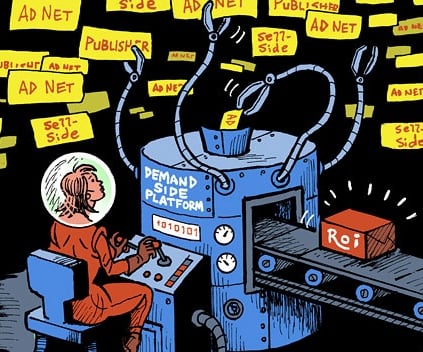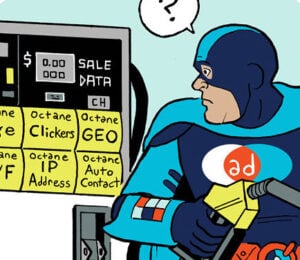Zillow had a problem.
The company, a large real estate listings platform, wanted to change its media mix to higher-quality online ad placements. “Environments where we are proud to show up,” as Zillow VP of media Ed Wild told AdExchanger.
Zillow also wanted to increase its mix of programmatic ads. But the conventional wisdom is scaling programmatic means more brand suitability concerns and made-for-arbitrage garbage websites, the exact things Wild said he wants to avoid.
Which is how Zillow ended up being the pilot brand advertiser to test a new programmatic buying strategy known as containerized RTB. The strategy embeds the DSP or ad-buying platform intelligence, in this case the startup Chalice Custom Algorithms, within the SSP, which is Index Exchange.
The pilot test of containerized RTB helped Zillow “find the best quality environment regardless of quote-unquote ‘cost,’” Wild said.
How it works
Index Exchange and Chalice first proposed what they call containerized RTB last year.
Index’s own data servers and cloud hardware host a virtual instance of Chalice, which for this campaign is an ad-buying model for Zillow. Rather than the curation or targeting happening at the DSP level, where the data available is what comes in the open RTB data packet (stuff like cookie data, device type, the type of ad that’s for sale, etc.). The containerized version sees the sort of detailed site information that a sell-side vendor might get from a publisher client where it has tags on the page.
“We have more controls over the granular engagement metrics that people don’t think about,” said Sally Lee, VP of programmatic at the agency Canvas Worldwide, the agency working with Zillow and Chalice on the containerized RTB tests. (Canvas has one other client piloting the product with Chalice, but Lee would only reveal that it’s a car brand.)
But what kind of “granular engagement metrics” does the containerized version of a curation product really have that wouldn’t work using a DSP account seat?
Well, Lee said, the ad ratio, which is the number of ads on the page, is one of the most important metrics for what constitutes premium programmatic, especially for online video, which was the format tested by Zillow.
Sometimes a page might display numerous video ads. Also, does the video ad play with sound on or mute by default? That’s another important factor that the site vendor knows but isn’t passed in the bidstream.
How often do the ads on the page refresh? How long is the organic video the person actually came to that page to watch? Video length can be a strong indicator of quality engagement as a potential sign that someone will sit through a short ad to get to the content. Some outstream ads, which are video ads loaded on a page that aren’t part of a video player, show a content length of zero.
Does the page have an infinite scroll-type feed? Are there other pages loading out of view? How many data broker, ad tech network or other vendor calls are being made on the page?
These are all data points that can be incorporated into the model and bid upon when the curation is happening within the SSP, Lee said.
Other than having those different metrics available, the containerized RTB campaign isn’t much different for the agency than planning and running a typical DSP campaign, she said.
Another advantage, she added, is that the cloud-native setup means AI tools can be used. Rather than using a “static” inclusion list of approved sites, which she said is a default way that brands preserve brand suitability for programmatic campaigns, AI-based campaigns can dynamically add new sites to the inclusion list.
After all, millions of new sites are added to the web every week, said Chalice Co-Founder and CEO Adam Heimlich.
Price is right
According to Wild, the most important takeaway for Zillow from the containerized RTB pilot is that the most direct programmatic metrics – the CPM and the twin stars reach and frequency – can be awfully misleading.
There is nothing inherently good about a low CPM, Wild said.
In fact, it might be a reason to avoid the placement altogether.
Quality programmatic online video can be found. That’s not CTV, but videos playing on sites on the web. The problem is that the market is set by YouTube, which affords far cheaper reach for its video campaigns.
Zillow is focused on identifying and bidding on sites with strong engagement and are premium by the brand’s definition, Wild said, which comes down to the ad layout on the page and attention metrics of those audiences, rather than targeting well-known publishers. If that means resetting Zillow’s baseline at a much higher CPM rate, so be it. The CPM isn’t the deciding factor.
“As long as there’s the effectiveness associated with [the media],” Wild said, Zillow has no problem paying a premium. “We just saw better returns by reaching people in those trustworthy places.”
And, he added, Zillow wants to reward publishers with worthwhile content who cut against the grain by not turning to the gimmicks and gamesmanship incentivized by programmatic budgets, like stuffing ads on one page or running muted video ads out of view.
“We’re trying to support those higher-quality publishing environments,” he said.












